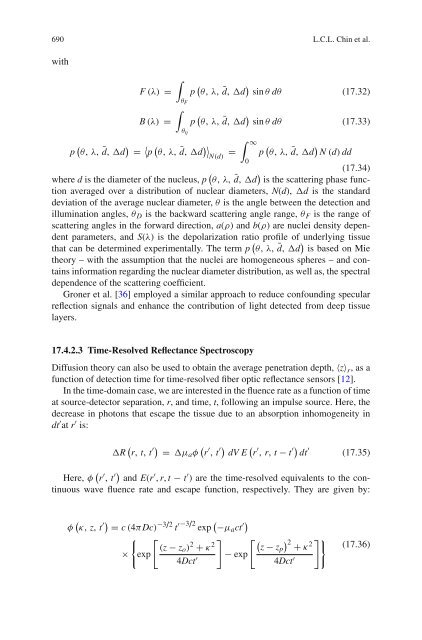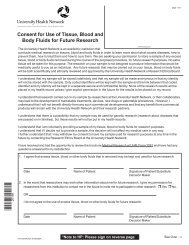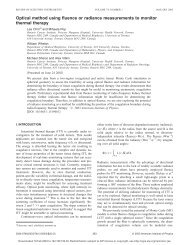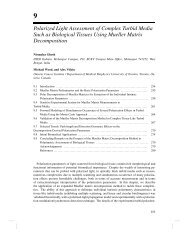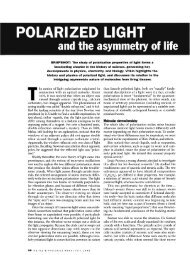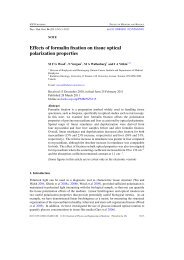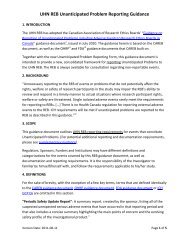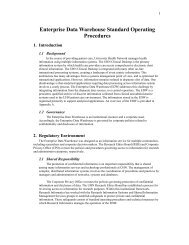Optical Fiber Sensors for Biomedical Applications
Optical Fiber Sensors for Biomedical Applications
Optical Fiber Sensors for Biomedical Applications
Create successful ePaper yourself
Turn your PDF publications into a flip-book with our unique Google optimized e-Paper software.
690 L.C.L. Chin et al.with∫F (λ) = p ( θ, λ, ¯d, d ) sin θ dθ (17.32)θ F∫B (λ) = p ( θ, λ, ¯d, d ) sin θ dθ (17.33)θ ηp ( θ, λ, ¯d, d ) = 〈 p ( θ, λ, ¯d, d )〉 ∫ ∞N(d) = p ( θ, λ, ¯d, d ) N (d) dd0(17.34)where d is the diameter of the nucleus, p ( θ, λ, ¯d, d ) is the scattering phase functionaveraged over a distribution of nuclear diameters, N(d), d is the standarddeviation of the average nuclear diameter, θ is the angle between the detection andillumination angles, θ D is the backward scattering angle range, θ F is the range ofscattering angles in the <strong>for</strong>ward direction, a(ρ) and b(ρ) are nuclei density dependentparameters, and S(λ) is the depolarization ratio profile of underlying tissuethat can be determined experimentally. The term p ( θ, λ, ¯d, d ) is based on Mietheory – with the assumption that the nuclei are homogeneous spheres – and containsin<strong>for</strong>mation regarding the nuclear diameter distribution, as well as, the spectraldependence of the scattering coefficient.Groner et al. [36] employed a similar approach to reduce confounding specularreflection signals and enhance the contribution of light detected from deep tissuelayers.17.4.2.3 Time-Resolved Reflectance SpectroscopyDiffusion theory can also be used to obtain the average penetration depth, 〈z〉 r ,asafunction of detection time <strong>for</strong> time-resolved fiber optic reflectance sensors [12].In the time-domain case, we are interested in the fluence rate as a function of timeat source-detector separation, r, and time, t, following an impulse source. Here, thedecrease in photons that escape the tissue due to an absorption inhomogeneity indt ′ at r ′ is:R ( r, t, t ′) = μ a φ ( r ′ , t ′) dV E ( r ′ , r, t − t ′) dt ′ (17.35)Here, φ ( r ′ , t ′) and E(r ′ , r, t − t ′ ) are the time-resolved equivalents to the continuouswave fluence rate and escape function, respectively. They are given by:φ ( κ, z, t ′) = c (4πDc) −3 /2 t ′ −3/2 exp ( −μ a ct ′){ [] [((z − z o ) 2 + κ 2) 2]}z − zp + κ2× exp4Dct ′ − exp4Dct ′(17.36)


